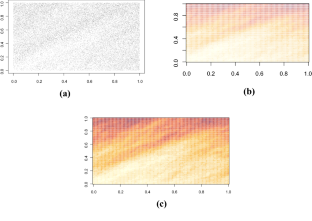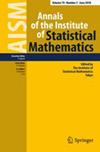基于Stoyan-Grabarnik统计量的时空点过程参数估计
IF 0.6
4区 数学
Q3 STATISTICS & PROBABILITY
Annals of the Institute of Statistical Mathematics
Pub Date : 2023-03-10
DOI:10.1007/s10463-023-00866-6
引用次数: 0
摘要
提出了一种新的时空点过程控制参数估计方法。与极大似然估计量不同,所提出的估计量快速且易于计算,并且不需要计算或逼近计算昂贵的积分。该参数估计是基于Stoyan-Grabarnik(逆强度和)统计量,并被证明是一致的,在相当一般的条件下。仿真验证了该估计器的性能。本文章由计算机程序翻译,如有差异,请以英文原文为准。

Parametric estimation of spatial–temporal point processes using the Stoyan–Grabarnik statistic
A novel estimator for the parameters governing spatial–temporal point processes is proposed. Unlike the maximum likelihood estimator, the proposed estimator is fast and easy to compute, and does not require the computation or approximation of a computationally expensive integral. This parametric estimator is based on the Stoyan–Grabarnik (sum of inverse intensity) statistic and is shown to be consistent, under quite general conditions. Simulations are presented demonstrating the performance of the estimator.
求助全文
通过发布文献求助,成功后即可免费获取论文全文。
去求助
来源期刊
CiteScore
2.00
自引率
0.00%
发文量
39
审稿时长
6-12 weeks
期刊介绍:
Annals of the Institute of Statistical Mathematics (AISM) aims to provide a forum for open communication among statisticians, and to contribute to the advancement of statistics as a science to enable humans to handle information in order to cope with uncertainties. It publishes high-quality papers that shed new light on the theoretical, computational and/or methodological aspects of statistical science. Emphasis is placed on (a) development of new methodologies motivated by real data, (b) development of unifying theories, and (c) analysis and improvement of existing methodologies and theories.

 求助内容:
求助内容: 应助结果提醒方式:
应助结果提醒方式:


